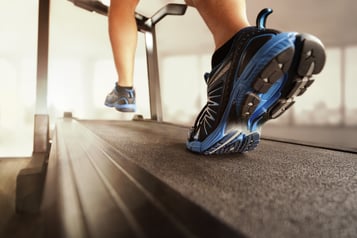The Right Shoes for Fitness Activity
The Right Shoes for Fitness Activity
In 2017, more than 18.3 million people registered to run a marathon. It’s likely that most of them bought shoes specially designed for outside running. What is the importance of wearing the right shoes for each fitness activity?
Outdoor Running
Whether you are a marathon runner or just someone who likes a morning jog, having the right shoe matters. Typically, people have one of three types of feet:
- Normal - normal arch and balanced roll

- Pronate - inward roll
- Supinate - outward roll
That makes choosing the right shoe for a runner complex. Those with normal feet have some flexibility in shoes, but pronate and supinate foot need trainers made for them.
Running shoes also must have the right cushioning and support to protect the foot on pavement or hard terrain. They should protect the heels, as well.
Cross Training Shoes
Cross trainers are rugged shoes that focus less on absorption and more on lateral support to protect the foot and ankle. Running propels you forward but you could go in any direction when cross training.
Fitness Classes
When attending your spin or Zumba dance class you need shoes with flexible soles that protect against slipping and that support both the ankle and heel. Try testing the shoe to make sure it has the right qualities for a class.
Bend it near the ball of the foot to see if its flexible, yet, supportive at the same time. Look for a stiff cup built into the back of the shoe to support the heel.
Weightlifting
Many types of athletic shoes have compressed soles, which is exactly what you don’t want for weightlifting. Compressed soles will absorb the weight you need to complete a deadlift or squat.
Look for shoes with hard and non-compressed or dense soles. Makes sure the shoe is snug enough that your foot won’t move around but not too constrictive.
Finally, check the traction of the shoe. You want something that stays grounded despite the force you put on it.
Fitness shoes are more than just tools. Consider them partners as you work to perfect your workout form whatever your sport.